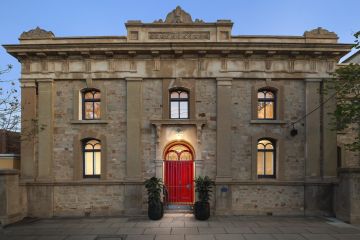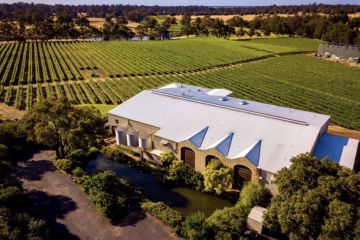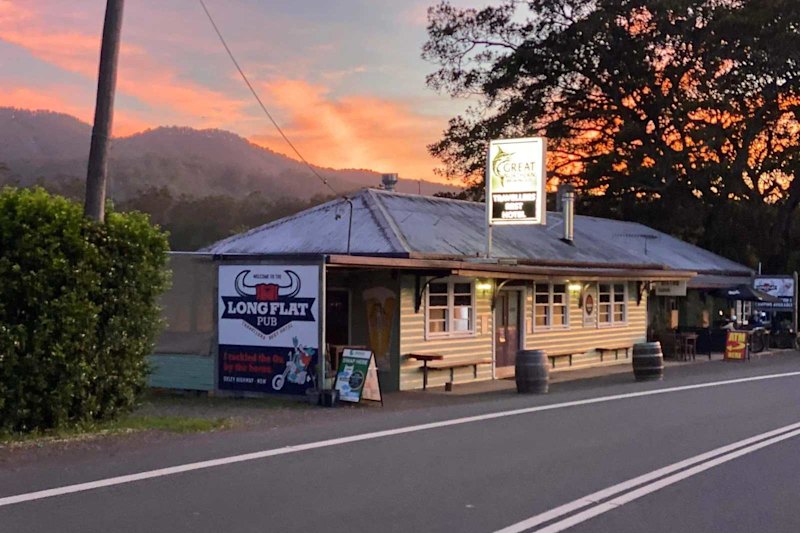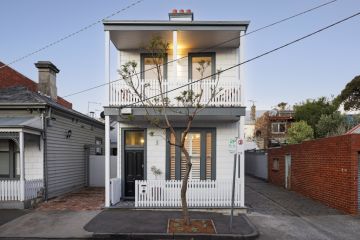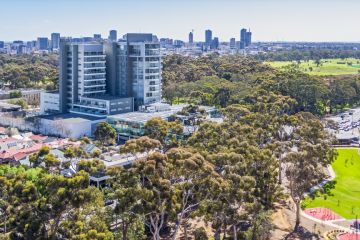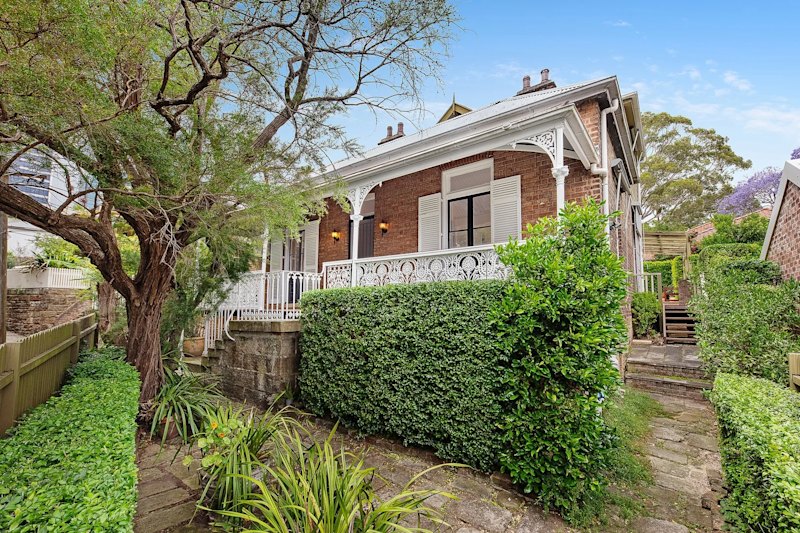An eclectic 'second-hand house' in the Sunshine Coast hinterland
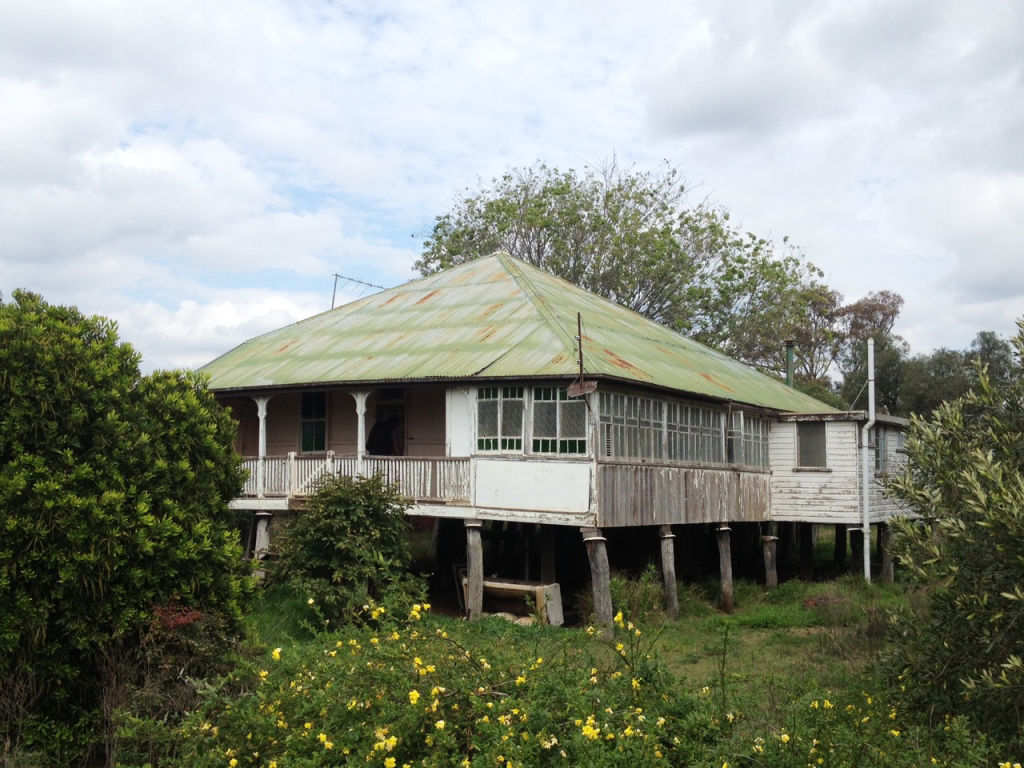
When Alison McNaughtan and Clay Stokoe were ready to create their forever home in the Sunshine Coast hinterland, they wanted it to align with their values around sustainability.
Concerned about the disastrous effects a “throwaway society” has on the environment and humanity, they built a “second-hand house”, where all materials and furnishings were recycled, from the biggest of walls to the smallest of light fittings.
The first thing they did showed their commitment: they brought in a hulking, century-old Queenslander from a paddock 300 kilometres away where it had sat abandoned for decades.
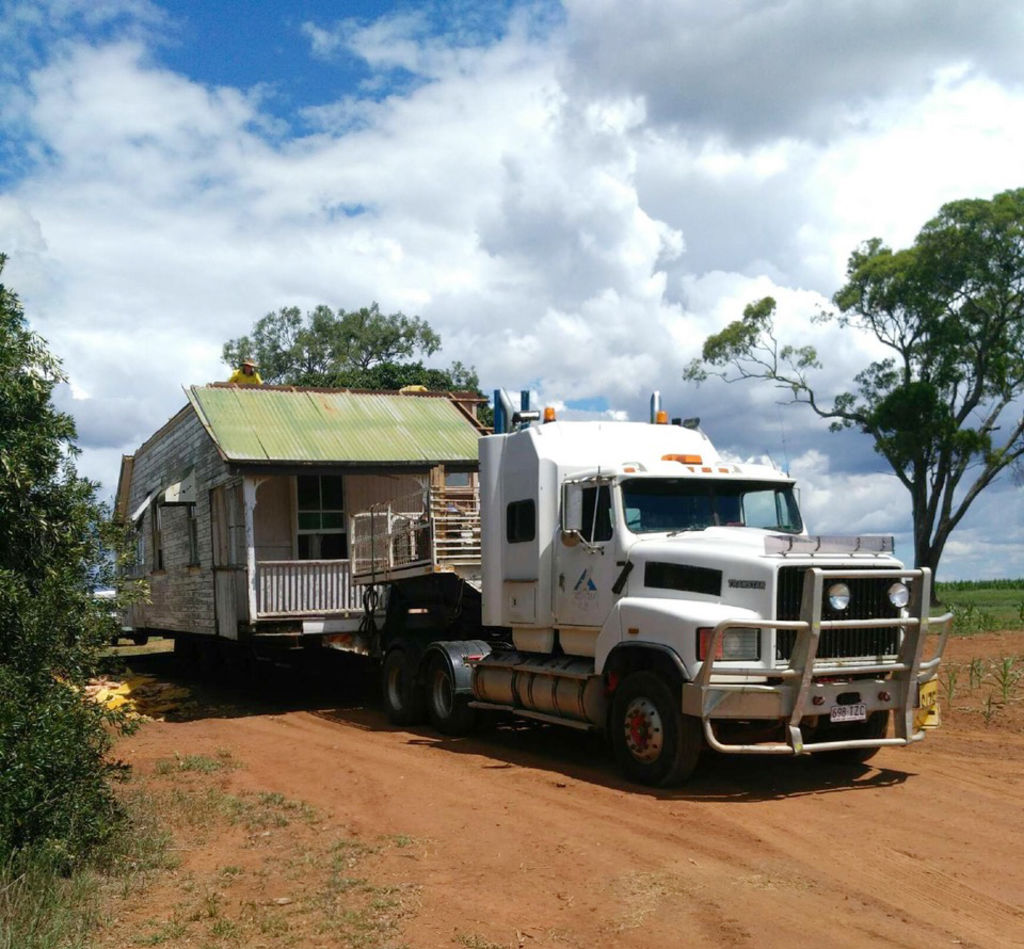
The house, while neglected and in dire need of work, was structurally sound and contained beautiful timbers. McNaughtan and Stokoe had it placed on a grassy hilltop on their Elaman Creek property, overlooking the bushland. But their work had barely begun.
The couple had to rebuild the rear of the house and lift the roof 20 centimetres to meet current cyclone standards. They sanded and repaired timber on the walls, floors and the verandah, maintaining their commitment by reusing everything they could from the original house, only sourcing extra materials from salvage yards when they had to.
It was slow, meticulous work but they wouldn’t have had it any other way. For them, saving the old place rather than building something from scratch was the right thing to do.
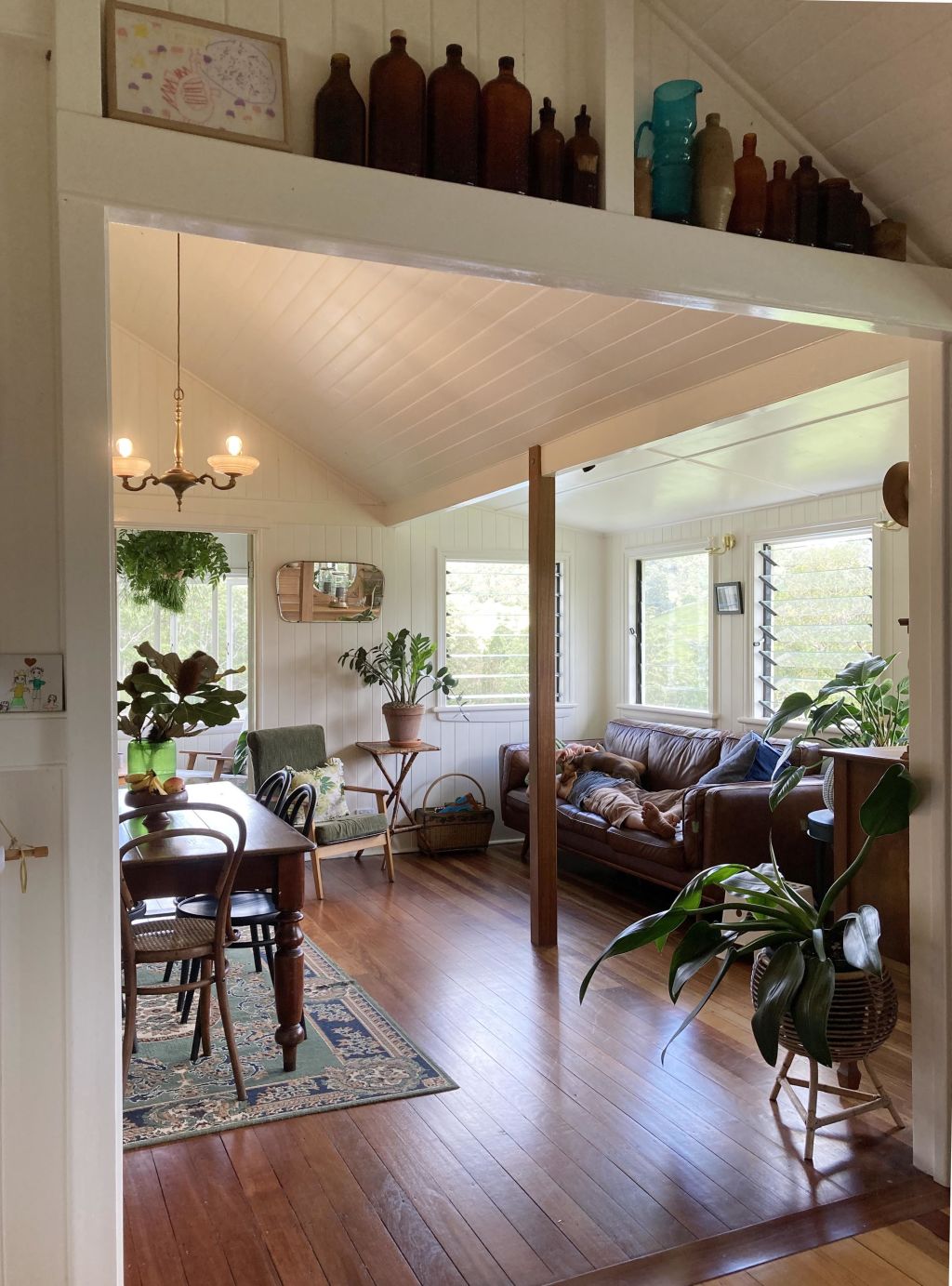
“Our main driver has been to walk lightly on the earth,” McNaughtan says, “and be mindful of sustainability in terms of manufacturing and construction.”
Happily, their efforts to keep things out of landfill also produced some bespoke pieces for their home. McNaughtan took the old verandah windows, which were damaged beyond repair, to a Brisbane leadlight artist, who created new window art for the house.
“I couldn’t bear the idea of just throwing [the broken glass] away,” McNaughtan says. “I love the story behind things, the evolution of how we use things to create something new. I love the patina of old, particularly when it comes to glass.”

This love inspired a hunt for vintage glass doors, light fittings, and a collection of old mirrors. Each room is furnished with second-hand pieces chosen for their quality, but only if they also tugged at the heart strings.
There’s a vintage velvet couch, a refurbished Rayburn wood stove in the kitchen, and a second-hand “cheap as chips” cast-iron bath and pedestal basin in the bathroom. A wood-burning heater was picked up for a song from Gumtree.
McNaughtan even drove a 300-kilometre round trip to pick up a leadlight cupboard she’d fallen in love with online, bringing it back in her VW hatch.
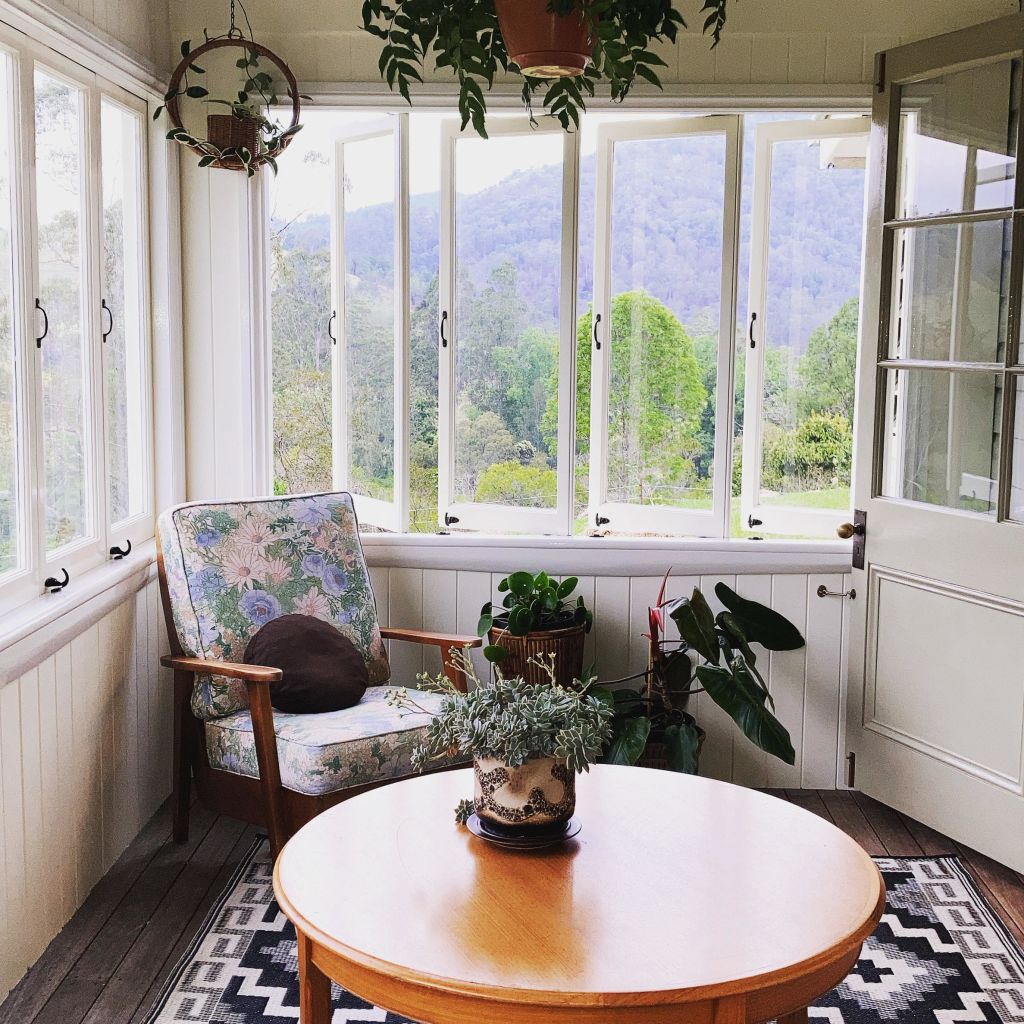
“We scrounged every demolition yard around, op shops, second-hand shops and garage sales, as well as forums like [Facebook] marketplace and Gumtree,” she says. “I love painting furniture so I look for pieces I can transform or update.”
Many pieces needed hard yakka to restore, but Stokoe says the benefit is that they’re usually much higher quality than buying new. “The challenges,” he says, “are finding them, and the time taken to pick them up and fix them up.”
Time was one thing the couple spent plenty of. In building their “second-hand house”, patience was key.
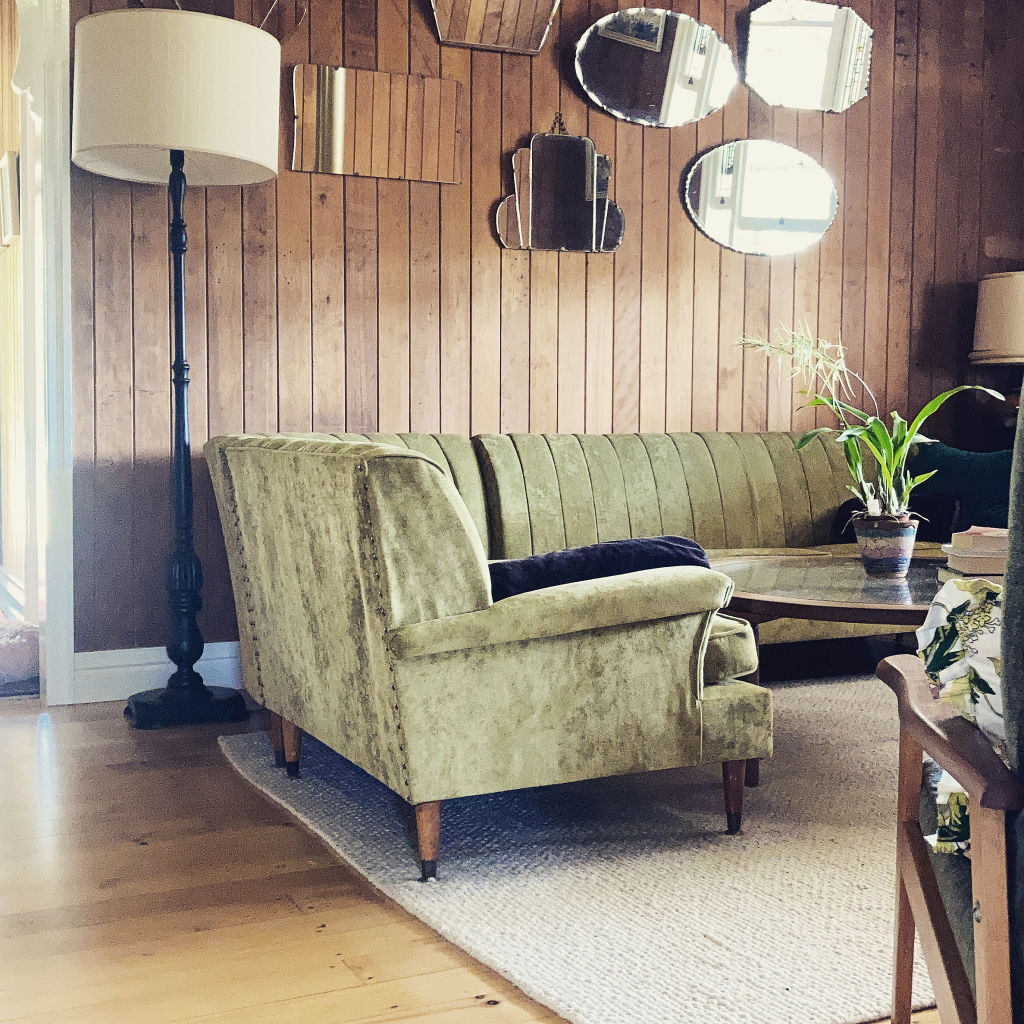
“We’ve coined the term ‘slow renovation’ as it keeps our expectations in check,” McNaughtan says. “When you’re looking for just the right thing, or size, you can’t just order it online.”
They also try to “listen” to the house for clues as to what should be done next. It’s a process McNaughtan has learnt to trust.
“We cannot rush it or the decisions don’t seem to be long-lastingly right. Going slow has allowed us to get it right for us.”
Stokoe agrees. “It seems we took the long way with every decision,” he says.

“It seemed like there was no other way than the best possible job we could do, which takes more time and consideration. The result being, our house will last another 100 years, no problem.”
The old beauty turns 105 this year and while the couple are in their third year of getting their home just the way they want it, their physical and emotional investment has only made them love it more.
“The deep connection to our lives through this restoration process has been deeply joyful,” McNaughtan says. “We are proud of ourselves beyond belief, and it is truly lovely to be able to say, when asked, ‘I made it, or I painted it’.”
This article is part of a series on Green Homes, brought to you by Belong, Australia’s first carbon-neutral telco and winner of Finder’s Green Telco of the Year 2020.
We recommend
We thought you might like
States
Capital Cities
Capital Cities - Rentals
Popular Areas
Allhomes
More
- © 2025, CoStar Group Inc.
